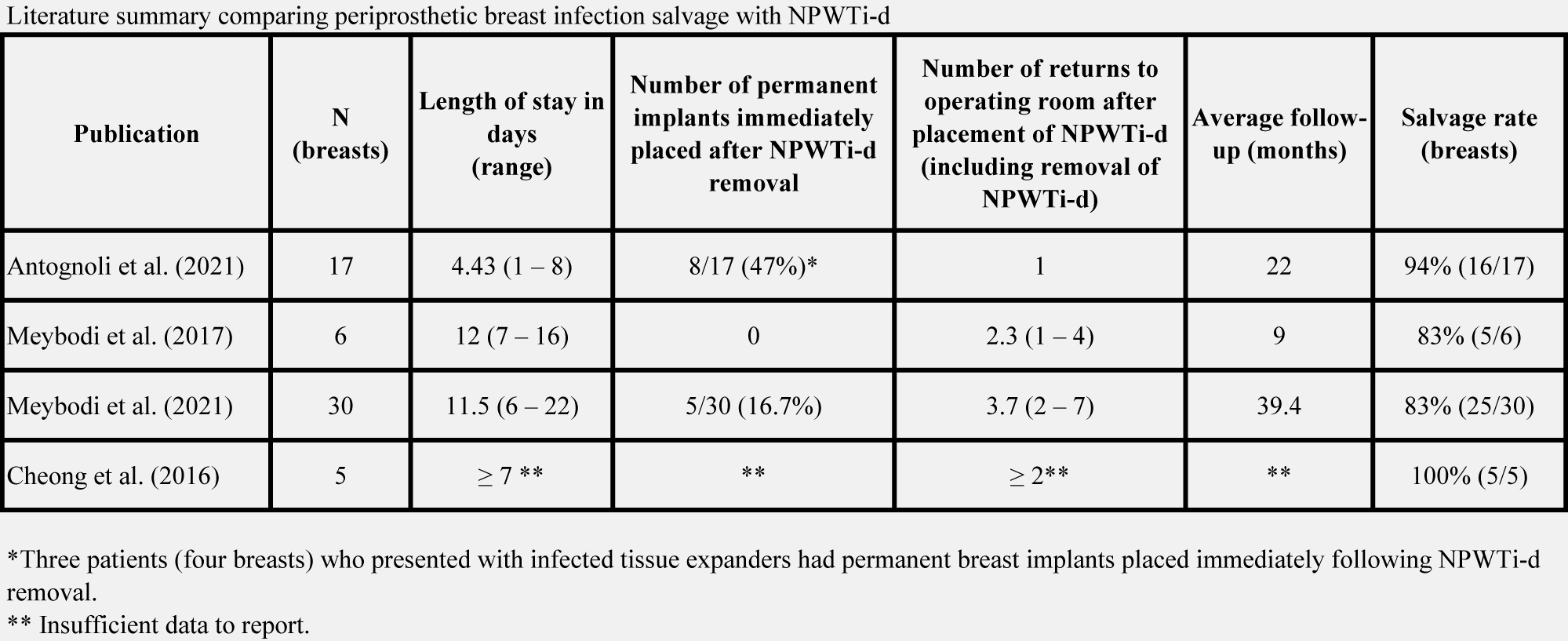Outcomes And Cost Analysis Of Single Application Npwti-D To Salvage Acutely Infected Breast Prostheses
Lauren Antongoli1, Devinder Singh2, Salman Choudhry1, Justin Turcotte1, Luther Holton1
1Anne Arundel Medical Center, Annapolis MD; 2University of Miami and Jackson Health Systems
Introduction: Rates of peri-prosthetic breast infection remain high despite increasing implant-based breast reconstruction, thus innovative salvage techniques must be employed to improve patient outcomes and decrease medical costs. Existing protocols using negative pressure wound therapy with instillation and dwell (NPWTi-d) require multiple returns to the operating room and prolonged length of stay. Furthermore, use of this salvage method is often avoided in patients with severe infection or immunocompromised patients. We present our expedited salvage protocol and discuss outcomes and associated costs savings.
Methods: Using a retrospective review, we identified 25 consecutive patients (27 breasts) with peri-prosthetic breast infection. Nine patients (10 breasts) underwent removal of infected breast prostheses followed by autologous or staged implant-based reconstruction. Sixteen patients (17 breasts) underwent our salvage protocol which entailed immediate explantation of the prosthesis, debridement and washout, and immediate placement of NPWTi-d (V.A.C. VERAFLO with Prontosan), followed by definitive removal of NPWTi-d and reimplantation of a breast prosthesis. A cost analysis was performed comparing the two groups, and an economic model was used to project the cost savings associated with using the single application NPWTi-d protocol.
Results: Fifteen of the 16 patients who underwent single application NPWTi-d had successful implant salvage (94%). The average duration of NPWTi-d was 2 days, 7 hours (range 24 – 118), and average length of stay was 4.43 days (range 1 – 8). Compared to control, patients who received the single application protocol required significantly fewer hospitalizations (p=0.002) and office visits (p=0.002). And while decreased, differences in cost per hospitalization or total hospitalization cost were not statistically significant. A total savings of $58,275 could have been achieved by using the single application NPWTi-d protocol in the patients who did not undergo NPWTi-d.
Conclusion: Single application of NPWTi-d is a simple, safe, and cost-effective technique for breast prosthesis salvage with 94% success rate, even in immunocompromised patients and severe infection. This method often allows for safe placement of implants directly after salvage, even in patients who present with infected tissue expanders. Our expedited protocol compares favorably to previous protocols, which require more trips to the operating room, longer length of stay, and fewer permanent implants placed during salvage. Patients who underwent our single application protocol also had fewer office visits and fewer returns to the operating room, which has implications for substantial healthcare cost savings.
Back to 2022 Abstracts

